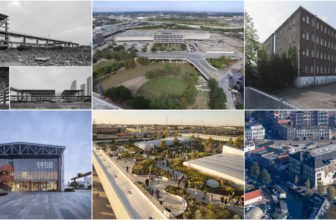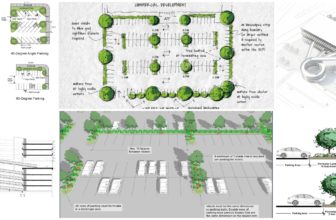Survey Shows Best and Worst Countries for Female Architects
Female architects have been trying to prove their strong existence in the architectural field through the last 130 years. However, in the past before the 1972 passage of “Title IX”, many architectural schools never accepted female students. Still, nowadays architecture remains as a hard field for females to work in.
According to a survey done by BDonline in 2016 , 6,997 of 24,991 architects in 100 architectural practices are women. The survey’s aim is to show the top countries to be a female architect and also the worst ones.
“In the meantime, we thought we’d take a look at which countries appeared to be the friendliest to female architects who want to work for big practices.”
“With childcare often cited as a major factor for one of a two-parent family to leave architecture, we thought the percentage of the average wage spent on this would be a significant factor as women still tend to be the primary care giver in most countries.” BD online.
Countries which ranked the best according to the ratio of male to female architects in the architectural field:
1. VIETNAM (0.7 male architects per female architect).
2. TURKEY (0.8 male architects per female architect).
3. SWEDEN / NORWAY (1 male architect per female architect).
4. GERMANY / FRANCE (1.3 male architects per female architect).
5. SPAIN (1.4 male architects per female architect).
Full-time female architects today still earn 20% less than male architects, according to the U.S. Bureau of Labor Statistics.
The best countries for female architects with childcare:
1. SWEDEN
Average number of male to female employees: 1 to 1
Paid maternity leave: 60 weeks full pay
Paid paternity leave: 8.5 weeks full pay
Cost of childcare as percentage of average income: 7.1%
2. NORWAY
Average number of male to female employees: 1 to 1
Paid maternity leave: 34 weeks full pay
Paid paternity leave: 12 weeks full pay
Cost of childcare as percentage of average income: 16.8%
3. GERMANY
Average number of male to female employees: 1.3 men for every woman
Paid maternity leave: 14 weeks full pay, 12 months on 65% pay (14 months for single parents)
Paid paternity leave: 12 months on 65% pay (14 months for single parents)
Cost of childcare as percentage of average income: 14.1%
4. DENMARK
Average number of male to female employees: 1.5 men for every woman
Paid maternity leave: total of 52 weeks fully paid parental leave of which a minimum of 18 weeks to be taken by mother
Paid paternity leave: total of 52 weeks fully paid parental leave of which a minimum of two weeks to be taken by father
Cost of childcare as percentage of average income: 11.2%
5. SPAIN
Average number of male to female employees: 1.4 men for every woman
Paid maternity leave: 16 weeks on full pay
Paid paternity leave: 15 days
Cost of childcare as percentage of average income: 8.2%
6. FRANCE
Average number of male to female employees: 1.3 men for every woman
Paid maternity leave: 16 weeks on full pay, rising to 26 weeks for the third child
Paid paternity leave: 14 days
Cost of childcare as percentage of average income: 16.5%
The survey also covered the top worst countries to be a female architect:
1. Japan
Average number of male to female employees: 9 men for every woman
Paid maternity leave: 14 weeks on 60% pay
Paid paternity leave: no statutory entitlement
Cost of childcare as percentage of average income: not available
2. USA
Average number of male to female employees: 2.5 men for every woman
Paid maternity leave: none statutory across the country – five states require pay for six weeks of between 50% and 100% of salary
Paid paternity leave: none statutory across the country – three states require pay for between five and six weeks at either $250 per week, 55% of 66% of salary
Cost of childcare as percentage of average income: 38.1%
3. UK
Average number of male to female employees: 2.5 men for every woman
Paid maternity leave: 6 weeks at 90%, then 33 weeks at £136.78 per week (unless 90% of salary is lower)
Paid paternity leave: 1-2 weeks, rising to 29 weeks if mother returns to work
Cost of childcare as percentage of average income: 40.9%
Via BDonline





